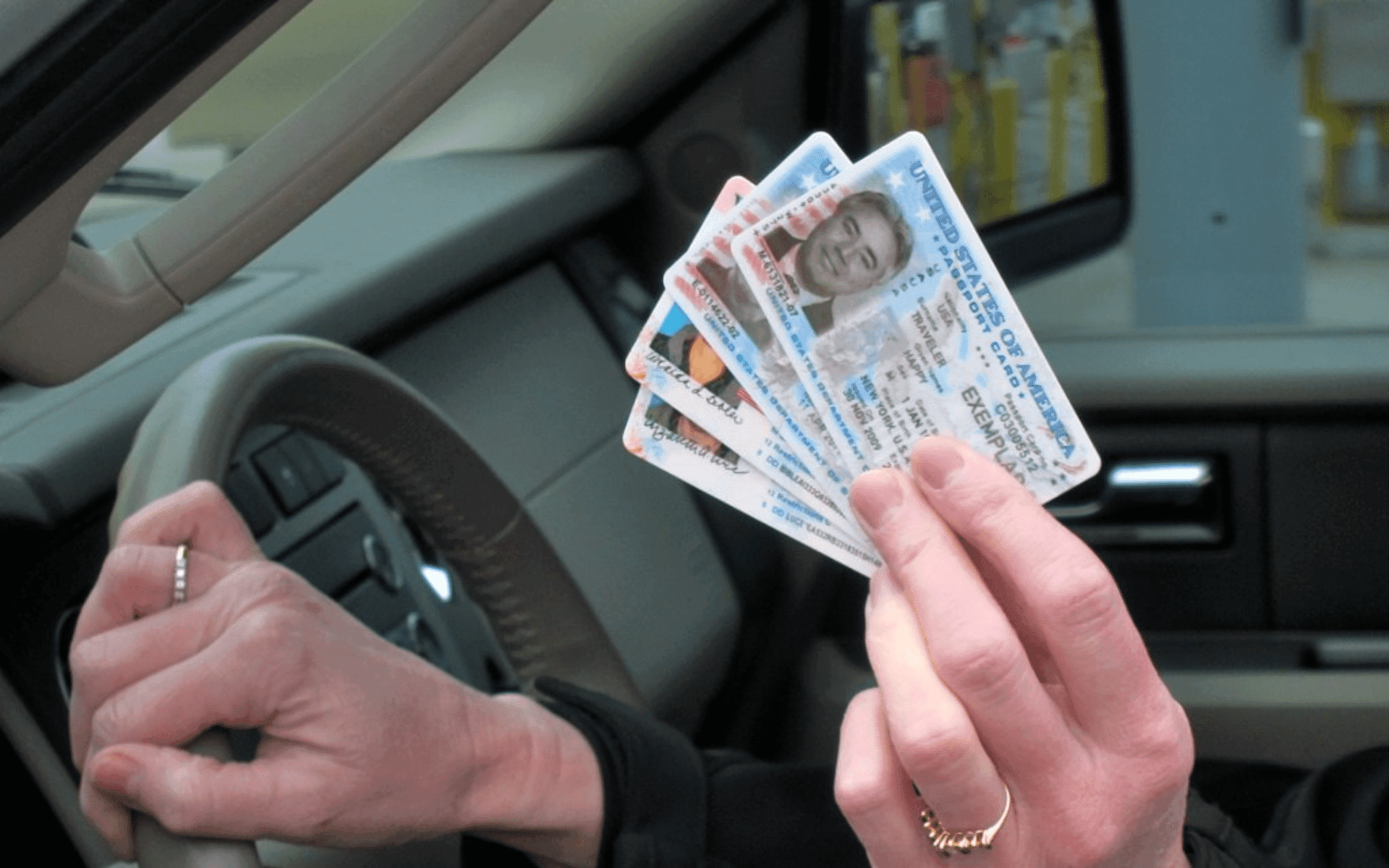The auto industry has long been a target for fraudsters seeking quick profits from high-ticket grifts. However, recent years have witnessed a significant surge in a new type of crime: synthetic fraud. This sophisticated scheme involves criminals combining real information from various sources to create fabricated identities, posing a formidable challenge for auto lenders to detect and prevent.
The gravity of this situation is underscored by recent data: analysts observed a staggering 98% increase in synthetic identity attempts in 2023, resulting in $7.9 billion in loss exposure for the auto industry. As technology continues to advance and AI emerges as a powerful but dangerous tool, industry experts predict that the frequency and sophistication of these crimes will only accelerate. With 87% of dealerships impacted by fraud last year, it’s time for dealers to take action to protect themselves and their customers.
Table of Contents
What is Synthetic Fraud?
Synthetic fraud is a complex form of identity theft where criminals create new, fake identities by combining real and fabricated information. This may involve a range of data, including social security numbers, credit files, and email addresses. Unlike traditional identity theft, which involves stealing and using an existing person’s identity, synthetic identity theft creates an entirely new fictitious identity that can be difficult to trace or detect.
This form of fraud often targets the public sector, with criminals building false identities to secure government benefits. However, it’s become more prominent across the commercial world, fueling the need for business owners to take action.
Behind the Increase in Synthetic Fraud
In order to build an effective strategy to combat a threat, it’s important to know where it’s coming from. While experts are still trying to understand what’s behind the rapid rise of synthetic fraud within the auto industry, some speculate that it can be attributed to a few major factors.
Technological advancements
As technology becomes more sophisticated, criminals gain access to tools that make it easier to create convincing fake identities. One of the biggest opportunities for fraudsters is the acceleration of AI technology.
Deepfakes, or synthetic media that uses deep learning to generate realistic content, can be misused to create fake documents or video verifications. While some states have passed laws to prevent these forgeries, the technology poses a major challenge for regulators.
Digitization of services
In the past few years, there’s been a major push for companies to shift their operations online. In response, government agencies and financial institutions have increasingly adopted digitization, opening more digital channels for fraudsters to exploit, including websites, emails, and text messages.
This gives synthetic fraudsters more opportunities to mimic legitimate identities. For instance, a particularly sophisticated synthetic identity thief may open credit cards and make payments to build credit history over time. Others may create bank accounts and exchange communications with government organizations to build a digital footprint. As these fake profiles increasingly resemble those of real people, it makes it harder to detect suspicious activity.
Uptick in data breaches
It’s not just synthetic fraud– cybercrimes as a whole are on the rise. According to an Apple report, there was a 20% increase in data breaches from 2022 to 2023. In the first half of 2024, we’ve already seen a handful of major cyberstrikes, from exploitation of the Ivanti VPN to the Ascension ransomware attack that put medical patients’ lives at risk.
During these attacks, hackers gain access to real personal information, such as photos, names, birthdays, home addresses, phone numbers, and social security numbers. From there, they may sell that data on the dark web or use it for their own schemes. These pieces of information will act as building blocks used to create synthetic identities and the documents that go with them.
How to Fight Synthetic Fraud in Auto Sales
As the threat of synthetic fraud becomes more prevalent in the auto industry, protecting your business as a dealer or auto lender is no simple task. To combat increasingly sophisticated schemes involving this type of fraud, you need to take steps to make security a core part of your operations.
1. Level up your internal processes
Fraudsters are tricky, and the technology powering their schemes is rapidly changing. That’s why it’s important to adopt regular practices into your business to stay on top of their tricks and more accurately identify fraudulent activity.
Train your team
To reduce risk of fraud, it’s important to start by enforcing adoption with your on-the-ground team. Train employees to look out for bad actors by educating them about synthetic identity fraud, its risks, and how to spot potential red flags. Then, provide them an easy-to-follow protocol if an applicant identity sets off alarm bells.
Track fraud-related losses
According to a recent survey, 26% of auto lenders admit that they do not track their fraud losses. This lack of data can make it difficult for them to reduce incidents moving forward. By monitoring and quantifying fraud losses, you can justify investments in fraud prevention and highlight areas for improvement.
Stay informed on new practices
In the evolving fraud landscape, being agile is key to identifying and preventing the latest scheme. To stay a step ahead of criminals, keep up-to-date with new developments in both the fraud industry and the technologies used to combat it.
2. Authenticate customer identity at key steps in the process
A simple ID check is no longer enough to verify a customer’s identity. As counterfeit identification becomes increasingly sophisticated, a more comprehensive authentication process is crucial to ensure security.
Adopting a digital ID authentication solution is now essential to protect your business. You can’t rely solely on visually confirming that an ID card has the right layout. Rather, the sophistication of modern fraudsters demands a deeper level of scrutiny.
To address this challenge, consider implementing advanced ID verification technology. For instance, solutions like CheckMy ID enable instant authentication of a customer’s identity through a simple scan. Powered by AI, such technology can detect fraud across thousands of global identity document types by performing numerous algorithmic checks on the ID’s barcode and comparing it against public records for enhanced security.
By digitizing your ID authentication process, you make it more accessible for your team to use at critical points throughout the car sales journey, from test drives to final deal closure. This comprehensive approach significantly reduces the risk of fraud-related losses throughout the entire sales cycle.
3. Verify and monitor customer insurance
A crucial step in preventing synthetic fraud is conducting thorough insurance verification and monitoring. While it’s theoretically possible for a highly sophisticated criminal to acquire a fraudulent auto insurance policy using a synthetic identity, this process is significantly more challenging than creating false identification documents. Creating a synthetic identity that matches a fake auto insurance policy that can be verified with a carrier is nearly impossible.
Implementing a rigorous insurance verification process paired with identity checks serves as an effective filter, likely to identify the vast majority of false identities attempting to do business with your dealership. This additional layer of scrutiny can substantially reduce your exposure to synthetic fraud while also ensuring legal compliance and protecting your asset.
CheckMy Driver helps you streamline your insurance verification process, saving up to 30 minutes per transaction. Through its customer-led flow, your customer can scan a QR code to log into their insurance account, allowing you to instantly access policy data directly from the source. Our AI-powered engine will verify that the information is active, accurate, and adequate, and deliver the results to you in an easy-to-read format.
Dealerships and lenders also have the option to set up ongoing monitoring to make sure the driver’s coverage continues to meet the requirements. Not only does this provide an additional check against synthetic identity fraud, but it also ensures that your real customers stay protected from dangers on the road.
Tying in identity verification is easy with CheckMy Driver, as CheckMy ID is a feature available for all transactions, including test drive, sale/lease, service, and rental.
The Future of Synthetic Fraud
As we look ahead, it’s clear that synthetic fraud will continue to evolve. The rise of “Fraud as a Service,” where criminal groups advertise fake document and identity services on platforms like Facebook and Telegram, indicates that these schemes are becoming more organized and accessible.
However, it’s not all doom and gloom. The same AI technologies that pose risks also have the potential to help prevent and detect fraud. By playing a role in ID verification, transaction authorizations, and behavioral pattern analysis, AI could become a powerful tool in the fight against synthetic fraud.
Take the Next Step with CheckMy Driver
Ready to start fighting synthetic fraud at your dealership? Learn more about how CheckMy Driver and CheckMy ID can help you create a fraud-proof protection plan.

